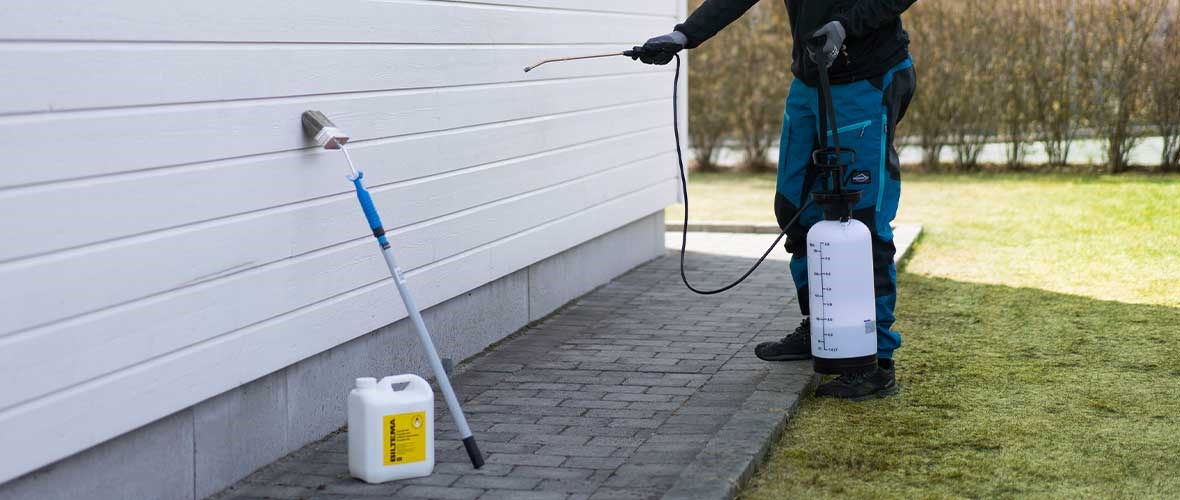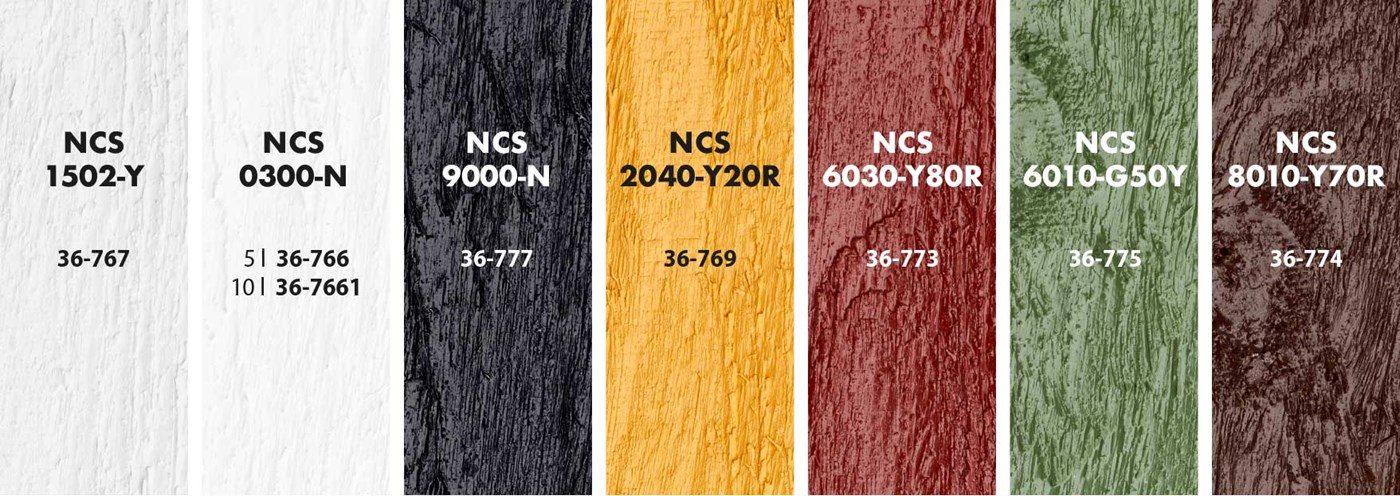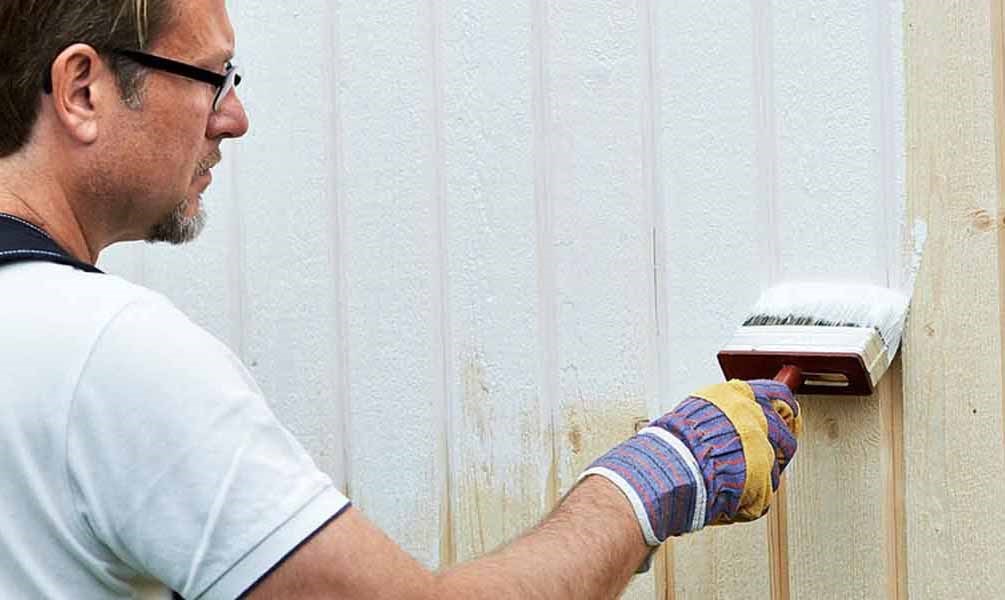How to Paint Your House
Important preparations
The first thing you need to do when painting a wooden house is check the condition of the cladding, window frames, bargeboards, etc. If any piece of wood is rotten, it must be replaced. Next, clean the exterior thoroughly. First rinse the wall with clean water, apply the exterior wash with a high-pressure sprayer, and then clean the wall with a washing brush on a telescopic handle. If you have problems with mould on the walls, you should use a mould remover to clean it off.

The next step is to remove all loose and flaking paint from the house exterior. You can do this with various tools, such as paint scrapers or trowels. To determine how much needs to be scraped away, use a knife to cut a square into the paint. If the paint comes away when you do this, the surface must be scraped clean.
Once you’re done scraping, you should go over the surface with a wire brush to clean and smooth out the edges of the remaining paint. To smooth out wood that has chipped, use sandpaper.
Keep in mind that paint scraping causes pieces of paint to fall to the ground – so it can be beneficial to lay out cardboard, protective foil, or a protective blanket. You can also use these products to protect your terrace, gutters, railings and other fixtures before painting. In addition, you should also invest in rolls of masking tape for outdoor use, both to protect windows and to tape the other installations.
Avoid moisture, sun and rain
After these preparations, it’s time to start the job. Important things to consider:
- The moisture level in the wood should be below 18%, and it is best to use a moisture gauge to check this. To achieve an accurate reading, measure several areas, including exposed spots such as end sections and areas in shadow.
- The best painting weather is cloudy with a temperature above 5 degrees. Avoid painting in direct sunlight – as the paint can dry too quickly and you risk discolouring.
- Do not paint in rainy weather or on days with over 80% relative humidity. However, if you absolutely have to paint on a rainy day, you can cover up with a tarpaulin

Start your paint job by applying primer on the end sections and exposed/bare wood. Use plenty of primer and work it well into the wood with a brush. After it has dried, you can apply the first coat of paint. Start at the top and work your way down – this minimises the risk of bumping into wet paint.
It is advisable to have a range of different types of brushes and rollers to get to any hard-to-reach areas:
- An exterior brush with good paint absorption and as wide as the panels does the job quickly without you needing to dip it in the paint tray as often
- A radiator brush with a long handle allows you to reach most nooks and crannies
- An oval brush allows you to paint both wide and narrow strokes, and is great for painting around windows
- A paint roller to work quickly on large surfaces
For more ergonomic and efficient work, we recommend using telescopic handles on both brushes and rollers. That way you won’t need to stand on the ladder as much.
Don’t be afraid to use a lot of paint, but make sure you don’t use too much, otherwise the paint may run. If you’re painting with a roller, it’s good to finish with a brush. Then you avoid both runs and curtains and you achieve a nice, sweeping surface. It may be advantageous to have two people working together – one to use the roller and one to do the finishing.

Color chart of our facade colours - With NCS codes and article numbers.
Avoid these mistakes:
- Painting on poor and dirty surfaces – preparatory work is essential.
- Choosing the wrong paint – ask our staff if you have any doubts.
- Painting on wet surfaces – use a moisture gauge to make sure.
- Spilling paint everywhere – use protective plastic and masking tape.
- Falling off the ladder – make sure the ladder is stable.
- Painting in direct sunlight – protect against sunlight or wait for cloudy weather.
- Using too much paint – several thin coats will produce better results.




